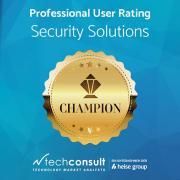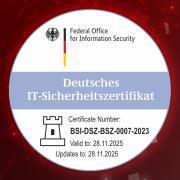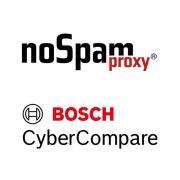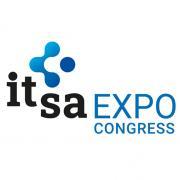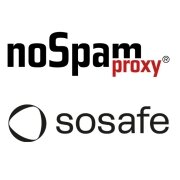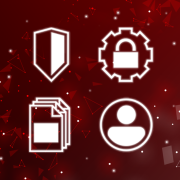It is essential for companies to continuously update and improve their IT systems. We meet this need with a sophisticated update system for the two products NoSpamProxy Server and NoSpamProxy Cloud. Through regular updates, we ensure that NoSpamProxy users always benefit from the latest features and optimum security.
For the seventh time in a row, NoSpamProxy has scored impressively in the survey conducted by analyst firm techconsult, which is based on real user feedback. The above-average product loyalty and recommendation rate reflect the strong focus on customer satisfaction.
In a pilot project with the German Federal Office for Information Security (BSI) and the recognized testing laboratory secuvera, NoSpamProxy Server was the first software product and also an email security product to be tested and certified according to the BSZ procedure. The BSZ is based on intensive testing with real attack scenarios and penetration tests, in which the product is always considered in typical and real application scenarios.
The independent cybersecurity consulting company, Bosch CyberCompare, supports customers in identifying and selecting appropriate security measures and suitable providers. NoSpamProxy is now part of the portfolio as the leading solution for email security.
Net at Work will showcase the multiple award-winning mail security “Made in Germany” as a software product and cloud service with new 32Guards sandbox, quarantine waiver, AS4 support and interesting partner offers.
Email security suite ‘Made in Germany’ cooperates with renowned provider of cyber security awareness trainings. Customers benefit from exclusive offers and comprehensive protection against cyber threats.
It can happen at any time: One click is enough, and the computer is infected, then the network, and then… If the computer freezes or the screen goes black or displays a warning, then something is very wrong. Most likely, it is a cyber attack. But what exactly do you have to do if a cyber attack has been successful and your IT environment is affected, and what legal regulations do you have to observe?
NoSpamProxy Cloud offers a highly available platform with which you can protect your company from attacks cloud-based. All known NoSpamProxy modules are available.
NoSpamProxy
Categories
Latest News
 NoSpamProxy Cloud Update July 202424.07.2024 - 08:00
NoSpamProxy Cloud Update July 202424.07.2024 - 08:00 NoSpamProxy receives VBSpam+ Award (Q2/2024)23.07.2024 - 10:00
NoSpamProxy receives VBSpam+ Award (Q2/2024)23.07.2024 - 10:00 Looking back at the NoSpamProxy Roadshow 202401.07.2024 - 10:02
Looking back at the NoSpamProxy Roadshow 202401.07.2024 - 10:02

